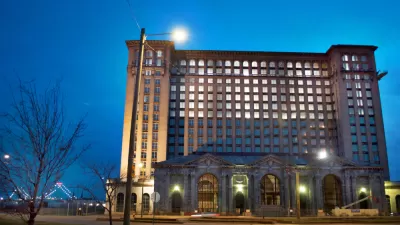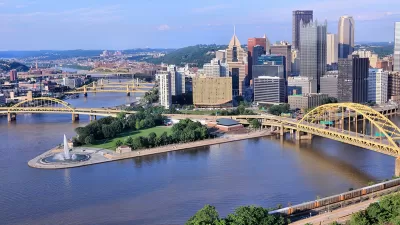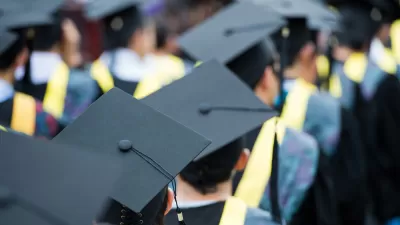Buffalo made its fortune in long-gone heavy industries such as steel. Now a new industrial revolution—in renewable energy—is bringing new life to the coldest, northernmost city of the American Rust Belt.

Now, things are turning around. Aided in part by a $1 billion redevelopment assistance plan from the state, the Buffalo region now has a healthy 5.3 percent unemployment rate. Some of those jobs are at high-tech companies, including Yahoo, that are capitalizing on the region's cheap energy, powered by Niagra Falls, which the defunct factories no longer use. Cheap real estate doesn't hurt either. Equally importantly, an emerging industrial economy is taking the place of the old one, building turbines and windmills near places that used to make girders and rails. There's a green energy complex, and the solar power company SolarCity has built a factory.
"Under the [redevelopment] plan, developed after a study from the Brookings Institution along with local community and business organizations, the state is trying to seed a cluster economy, Gov. Andrew Cuomo said, targeting several areas, including advanced manufacturing, health and life sciences and tourism. Seeing the opportunities for renewable energy came out of that process."
While the region has an extensive industrial infrastructure, it also has a robust social infrastructure, which has stuck around since Buffalo's heyday.
"Despite the long decline, much of that infrastructure remains — including transmission and rail lines, professional schools and fine art museums. All of that, along with generous government subsidies, is proving attractive to new industries like clean energy and advanced manufacturing."
The city is even attracting hipsters.
"Nowhere is the transformation more evident than in Larkinville, a collection of 19th-century buildings once clustered around the Larkin Soap Company that has become a work, entertainment and dining destination inspired by similar districts like Dumbo and Williamsburg, Brooklyn."
FULL STORY: The Wind and Sun Are Bringing the Shine Back to Buffalo

Alabama: Trump Terminates Settlements for Black Communities Harmed By Raw Sewage
Trump deemed the landmark civil rights agreement “illegal DEI and environmental justice policy.”

Planetizen Federal Action Tracker
A weekly monitor of how Trump’s orders and actions are impacting planners and planning in America.

Why Should We Subsidize Public Transportation?
Many public transit agencies face financial stress due to rising costs, declining fare revenue, and declining subsidies. Transit advocates must provide a strong business case for increasing public transit funding.

Phoenix Announces Opening Date for Light Rail Extension
The South Central extension will connect South Phoenix to downtown and other major hubs starting on June 7.

How Housing as a Financial Product Harms Communities
Institutional buyers who treat housing as an investment product become disconnected from the impacts of higher rents, displacement, and housing instability.

Blinded by the Light: When Brighter Headlights Decrease Safety
Bright LED headlights can create glare and reduce visibility for other drivers and pedestrians.
Urban Design for Planners 1: Software Tools
This six-course series explores essential urban design concepts using open source software and equips planners with the tools they need to participate fully in the urban design process.
Planning for Universal Design
Learn the tools for implementing Universal Design in planning regulations.
Caltrans
Smith Gee Studio
Institute for Housing and Urban Development Studies (IHS)
City of Grandview
Harvard GSD Executive Education
Toledo-Lucas County Plan Commissions
Salt Lake City
NYU Wagner Graduate School of Public Service





























